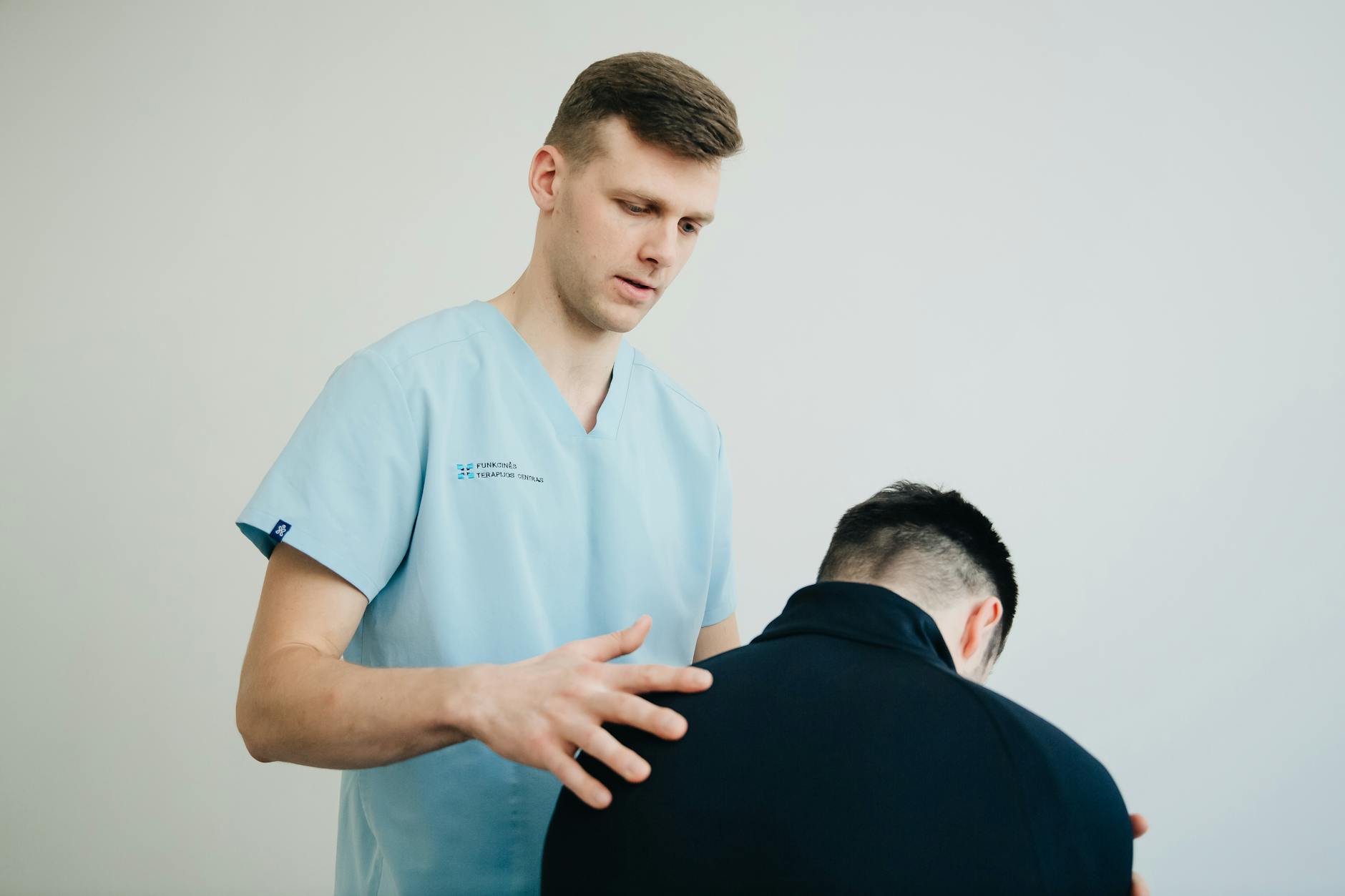
They didn’t start with movement—they started with listening
She came in for knee pain.
But they didn’t rush to stretch her leg.
They asked when it started.
How it felt in the morning.
If stairs were worse than hills.
They asked about her sleep.
And how she sat at work.
That surprised her.
No one had asked that before.
I thought they would only touch the injured part
He pointed at her back.
Then her hips.
Then her shoulders.
She said the pain was in her knee.
He nodded.
And said, “Yes. But we start here.”
Because nothing moves alone.
They tested her whole posture.
Watched how she stood up.
How she turned.
Even how she took off her shoes.
The questions were small, but they mattered
How long can you sit?
Do you shift your weight when brushing your teeth?
Can you lie flat on your stomach?
She didn’t know.
Until she tried.
And found the answer.
They didn’t tell me to rest—they told me how to move
She expected limits.
“Don’t do this, avoid that.”
But instead, he said,
“Try this angle. Try this height.”
He gave her new positions.
New sequences.
They didn’t remove movement.
They reshaped it.
Pain wasn’t the only thing they noticed
He asked about numbness.
About weakness.
About balance.
She said she hadn’t fallen—yet.
He paused at the word “yet.”
That changed the plan.
It wasn’t just exercises—it was information
They didn’t give her printouts.
They explained every step.
Why the stretch mattered.
What it triggered.
What not to ignore.
She left knowing more than just movements.
She left knowing why.
They touched with purpose, not pressure
He didn’t crack anything.
Didn’t twist joints fast.
He moved slowly.
Waited.
Watched.
The pressure changed depending on her breath.
Nothing was sudden.
I didn’t expect to talk so much
She thought it’d be all action.
But there were pauses.
Longer than expected.
He waited for her to speak.
Not just about pain
But about how pain changed her day.
That made all the difference.
They asked how I feel after—not just during
He didn’t stop at the last rep.
He asked how she slept that night.
If the pain moved.
If anything felt strange in the shower.
The therapy didn’t end with the table.
It extended into her day.
It didn’t hurt the way I thought it would
She imagined agony.
Bracing for each move.
But it wasn’t like that.
The hardest part was trusting the process.
The body resisted.
Then softened.
Then adapted.
They tracked progress in inches, not miles
He celebrated her lifting her arm halfway.
Not all the way.
Just halfway.
Because that was new.
Progress wasn’t loud.
But it was steady.
And visible.
If you knew where to look.
I didn’t need machines to improve
There was a mat.
Some bands.
A chair.
That was it.
No wires.
No noise.
Just motion
And attention.
They remembered how I walked last time
He said, “Your left side is leading again.”
She hadn’t noticed.
But he had.
He’d remembered
From last week.
From the way she turned corners.
That memory mattered.
They taught me how to move without thinking about it
At first, she concentrated on every step.
Heel, toe, hip, breath.
Then one day, she just walked.
Without checking.
Without adjusting.
It just worked.
They didn’t rush the injury—they respected the body’s pace
She wanted to be done.
Back to running.
Back to everything.
But he slowed her down.
“Give the tissue time,” he said.
It wasn’t weakness.
It was strategy.
They cared more about how I lived, not just how I moved
He asked how she got out of bed.
How she reached the top shelf.
How she carried groceries.
He wasn’t training her for a race.
He was preparing her for her life.
